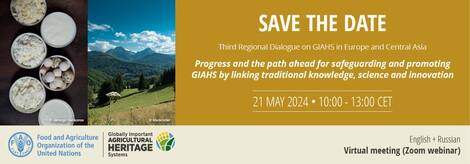
©FAO/ Liana John
The potato has a long history that began in the Andes of South America about 8 000 years ago when communities of hunters and gatherers began domesticating wild potato plants that grew around Lake Titicaca. Much later, around the 16th century, the Spanish brought the potato to Europe from Peru and began growing it in their country. These tubers grown in Spain were then sent around Europe as exotic gifts...

©ARGE Heumilch
Through its Globally Important Agricultural Heritage Systems (GIAHS) initiative in Europe and Central Asia, the Food and Agriculture Organization of the United Nations (FAO) works to recognize and sustain traditional agricultural systems with rural cultures and economies and to promote and integrate them into broader food systems value chains. Science and innovation play important roles in underpinning the strength and viability of GIAHS.

Did you know that most of the world uses the same two words for tea? One variation is the one used in English (tea), French (thé), Spanish (té) and Dutch (thee). The other is a variation of chá (in Mandarin and Cantonese), such as chai in Hindi, shay in Arabic and chay in Russian. There’s an interesting reason for this.

The third Regional Dialogue on GIAHS for Europe and Central Asia is a forum for GIAHS actors from across the region. Scientists and experts will provide scientific evidence gleaned from the work carried out in these agricultural systems, share keys to the resilience that characterizes these systems, and discuss the current threats that put their sustainability at risk.


